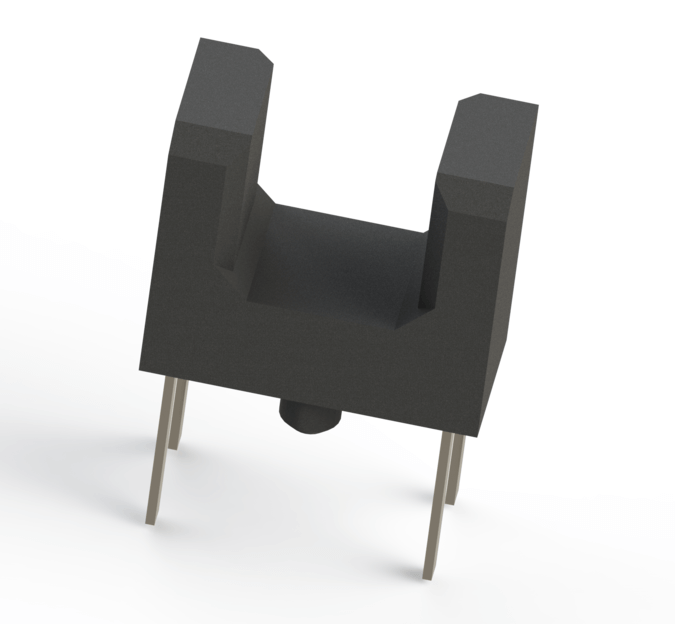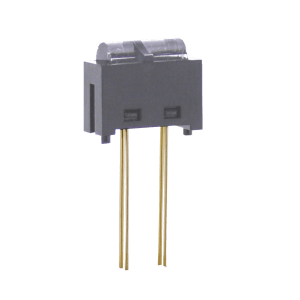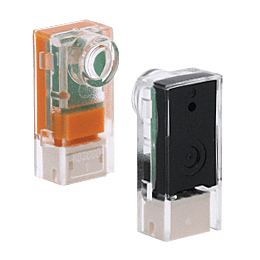LED Photo Diode Photo Transistor
LED Features:
1. Save money and energy. LEDs (light emitting diodes) are solid-state semiconductor devices that can convert electrical energy directly into light. Generally, a LED consumes less than 0.1 watts to operate. This low power consumption means you save on your energy costs.
2. Low heat output. LEDs can convert almost all the energy used into light creating a highly efficient light source. In contrast, today incandescent bulbs emit a lot of energy in the infrared spectrum which can not be seen. We know this wasted energy as the heat today bulbs give off.
3. Long life time. A LED can last up to 100,000 hours. In comparison an incandescent lifetime is about 1,000 hours and a halogen is about 2,000 hours.
4. Environmentally safe. LEDs are made from non-toxic materials unlike fluorescents which contain Mercury. Can also be recycled. Durable. No loose or moving parts.
LED Specification:
Maximum Ratings (T=25°C)
|
Parameter |
Symbol |
Min. |
Max. |
Unit |
Test Condition |
|
Reverse Voltage |
VR |
5 |
-- |
V |
IR=30 µ A |
|
Forward Current |
IF |
-- |
30 |
mA |
-- |
|
Power Dissipation |
Pd |
-- |
108 |
mW |
-- |
|
Pulse Current |
Ipeak |
-- |
100 |
mA |
Duty=0.1mS,1kHz |
|
Operating Temperature |
Topr |
-20 |
+85 |
° C |
-- |
|
Storage Temperature |
Tstr |
-25 |
+100 |
° C |
-- |
Electro-optical Characteristics (T=25°C )
|
Parameter |
Symbol |
Min. |
Max. |
Type |
Unit |
Test Condition |
|
Forward Voltage |
VF |
-- |
3.6 |
3.2 |
V |
IF=20mA |
|
Reverse Current |
IR |
-- |
30 |
-- |
μA |
VR=5V |
|
Luminous Intensity |
IV |
-- |
-- |
BIN |
mcd |
IF=20mA |
|
Viewing Angle |
2 θ 1/2 |
23 |
30 |
-- |
Deg. |
IF=20mA |
Applications of LED
1. In traffic light Indicators, signs and signals.
2. In data displaying boards.
3. In medical applications and toys
4. Non visual applications.
5. In light bulbs and many more.
6. Remote controls.
7. In motor vehicles and bicycle lights.
PhotoTransistor Features:
1. Low-cost visible and near-IR photo detection.
2. Available with gains from 100 to over 1500.
3. Moderately fast response times.
4. Available in a wide range of packages including epoxy-coated, transfer-molded and surface mounting technology.
5. Electrical characteristics similar to that of signal transistors.
Photo Transistor Specification :
Maximum Ratings (T=25°C)
|
Parameter |
Symbol |
Rating |
Unit |
|
Collector-Emitter Voltage |
VCEO |
30 |
V |
|
Emitter-Collector-Voltage |
VCEO |
5 |
V |
|
Collector Current |
IC |
20 |
mW |
|
Operating Temperature |
Topr |
-25 ~ +85° |
° C |
|
Storage Temperature |
Tstg |
-40 ~ +85° |
° C |
|
Lead Soldering Temperature(*1) |
Tsol |
260 |
° C |
|
Power Dissipation at (or below) 25? Free Air Temperature |
Pc |
75 |
mW |
Notes: *1:Soldering time<=5 seconds.
Electro-optical Characteristics (T=25°C)
|
Parameter |
Symbol |
Test Condition |
Min. |
Type |
Max. |
Units |
|
Collector – Emitter Breakdown Voltage |
BVCEO |
IC=100μA Ee=0mW/cm2 |
30 |
-- |
-- |
V |
|
Emitter-Collector Breakdown Voltage |
BVECO |
IE=100μA Ee=0mW/cm2 |
5 |
-- |
-- |
V |
|
Collector-Emitter Saturation Voltage |
VCE(SAT) |
IC=2mA Ee=1mW/cm2 |
-- |
-- |
0.4 |
V |
|
Rise Time |
tr |
VCE=5V IC=1mA RL=1000Ω |
-- |
15 |
-- |
μS |
|
Fall Time |
tf |
-- |
15 |
-- |
||
|
Collector Dark Current |
ICEO |
Ee=0mW/cm2 VCE=20V |
-- |
-- |
100 |
nA |
|
On State Collector Current |
IC(on) |
Ee=1mW/cm2 VCE=5V |
0.7 |
4.0 |
-- |
mA |
|
Wavelength of Peak Sensitivity |
λp |
-- |
-- |
940 |
-- |
Nm |
|
Rang of Spectral Bandwidth |
Λ0.5 |
-- |
-- |
400-1100 |
-- |
nm |
Applications of PhotoTransistor:
1. Punch-card readers.
2. Security systems
3. Encoders – measure speed and direction
4. IR detectors photo
5. electric controls
6. Computer logic circuitry.
7. Relays
8. Lighting control (highways etc)
9. Level indication
10. Counting systems
Photodiode Features:
1. Low cost
2. Temperature sensitive
3. Digital in nature
4. Unidirectional
5. Quicker response time
Photodiode Specification :
Maximum Ratings (T=25°C)
|
Parameter |
Symbol |
Rating |
Unit |
|
Reverse Voltage |
VR |
32 |
V |
|
Operating Temperature |
Topr |
-25 ~ +85° |
°C |
|
Storage Temperature |
Tstg |
-40 ~ +100° |
°C |
|
Soldering Temperature |
Tsol |
260 |
° C |
|
Power Dissipation at (or below) 25? Free Air Temperature |
Pc |
150 |
mW |
Electro-optical Characteristics (T=25°C)
|
Parameter |
Symbol |
Min. |
Type |
Max. |
Unit |
Test Condition |
|
Range Of Spectral Bandwidth |
λ0.5 |
400 |
-- |
100 |
nm |
-- |
|
Wavelength Of Peak Sensitivity |
λP |
-- |
940 |
-- |
nm |
-- |
|
Open-Circuit Voltage |
VOC |
-- |
0.39 |
-- |
V |
Ee=1mW/cm2 λp=940nm |
|
Short- Circuit Current |
ISC |
-- |
40 |
-- |
μA |
Ee=1mW/cm2 λp=940nm |
|
Reverse Light Current |
IL |
36 |
40 |
-- |
μA |
Ee=1mW/cm2 λp=940nm VR=5V |
|
Reverse Dark Current |
ID |
-- |
5 |
30 |
nA |
Ee=0mW/cm2 VR=10V |
|
Reverse Breakdown Voltage |
VBR |
32 |
170 |
-- |
V |
Ee=0mW/cm2 IR=100μA |
|
Total Capacitance |
Ct |
-- |
18 |
-- |
pF |
Ee=0mW/cm2 VR=5V f=1MHz |
|
Rise Time/ Fall Time |
tr/ / tf |
-- |
45/45 |
-- |
ns |
VR=10V RL=100Ω |
|
View Angle |
2θ1/2 |
-- |
80 |
-- |
deg |
IF=20mA |
Note: Tolerance of Luminous Intensity: ±10%
Tolerance of Dominant Wavelength: ±1nm
Tolerance of Forward Voltage: ±0.1V
Applications of Photodiode:
1. The applications of photodiodes involve in similar applications of photodetectors like charge-coupled devices, photoconductors, and photomultiplier tubes.
2. These diodes are used in consumer electronics devices like smoke detectors, compact disc players, and televisions and remote controls in VCRs.
3. In other consumer devices like clock radios, camera light meters, and street lights, photoconductors are more frequently used rather than photodiodes.
4. Photodiodes are frequently used for exact measurement of the intensity of light in science & industry. Generally, they have an enhanced, more linear response than photoconductors.
5. Photodiodes are also widely used in numerous medical applications like instruments to analyze samples, detectors for computed tomography and also used in blood gas monitors.
6. These diodes are much faster & more complex than normal PN junction diodes and hence are frequently used for lighting regulation and in optical communications.




